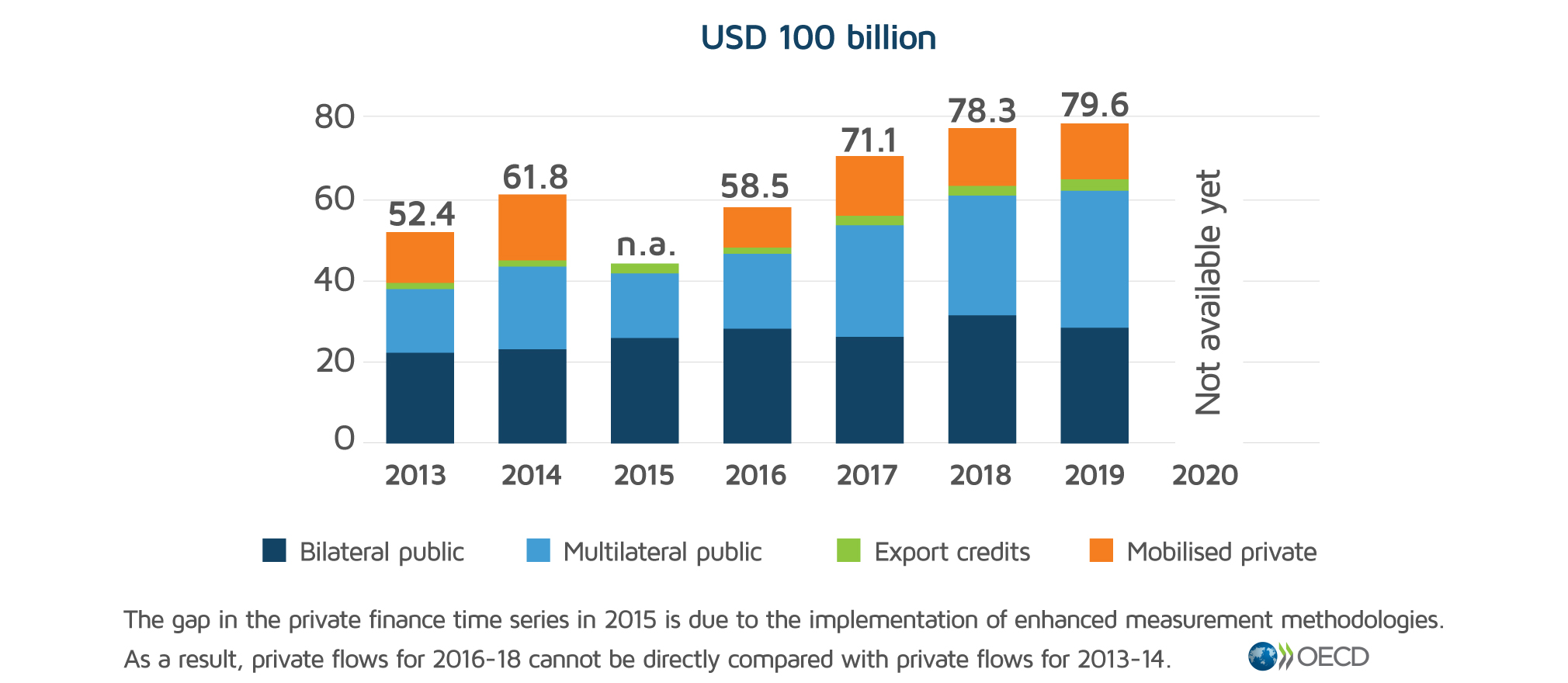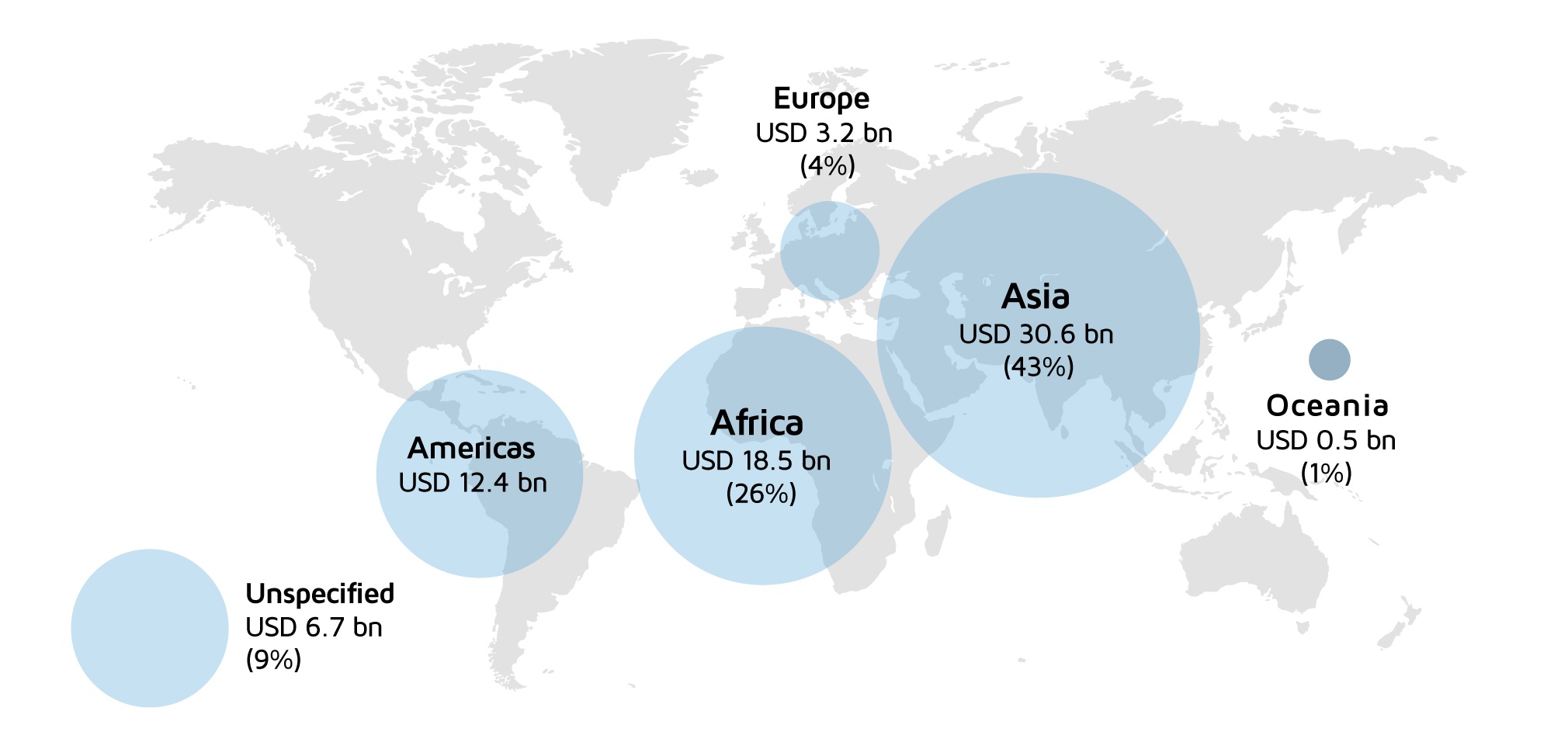Climate finance from high-income countries to emerging economies reached US$79.6 billion in 2019, an increase of 2% compared to 2018 according to the latest Organization for Economic Co-Operation and Development (OECD) report. However, the publication states that an annual increase of over US$20 billion is still needed to meet the US$100 billion objective established for 2020 by the United Nations Framework Convention on Climate Change (UNFCCC).
Between 2018 and 2019, multilateral public climate finance increased by 15% while bilateral public climate finance plunged by 10%. Commenting on this evolution, OECD Secretary-General Mathias Cormann said:
He described the progress in overall climate finance volumes between 2018 and 2019 as “disappointing”. He further emphasized that:
“While appropriately verified data for 2020 will not be available until early next year it is clear that climate finance will remain well short of its target. More needs to be done. We know that donor countries recognize this, with Canada and Germany now taking forward a delivery plan for mobilizing the additional finance required to reach the US$100bn a year goal.”
According to the assessment report, public climate finance from high-income countries reached US$62.9 billion in 2019 while bilateral public climate finance stood at US$28.8 billion. At the same time, multilateral public climate funding attributed to high-income countries jumped by 15%, reaching US$34.1 billion. The amount of private climate finance mobilized reached US$14 billion in 2019, 4% less than in 2018. Climate-related export credits continued to be low at US$2.6 billion.
Fig.1. Climate finance for developing countries, in USD billions

Mitigation and adaptation financing
In 2019, adaptation finance grew by 20%, reaching US$20.1 billion while mitigation finance dropped by 7% to US$50.8. Despite the decline, mitigation still accounts for two-thirds of the overall climate finance provided and mobilized by high-income economies.
Fig.2. Thematic split of climate finance provided and mobilized (USD billion)
Mitigation itself is largely driven by finance for activities in the energy and transport sectors. Remarkably, both sectors together continue to account for half of the overall climate finance provided in 2019.
Fig.3. Sectoral split of climate finance provided and mobilized
As for public grant financing, in 2019 the amount reached US$16.7 billion, 30% more than in 2018. However, the number of public loans, which had been increasing until 2018, dropped by 5% to US$2.3 billion in 2019.
Fig.4. Public climate finance per instrument, excluding export credits (USD billion)

Regional perspectives
Asia continues to take a leading role as a beneficiary of the climate finance provided and mobilized by developed countries. On average, the continent received US$30.6 billion annually over the 2016-2019 period. Asia is followed by Africa and the Americas. Climate finance for Least Developed Countries sustained its growth path in 2019 while climate finance for Small Island Developing States began to decrease.
Fig.5. Regional split of climate finance provided and mobilized (2016-19, annual average)

Background
In 2019, at the 15th Conference of Parties (COP15) of the UNFCCC high-income countries agreed to a joint objective of mobilizing US$100 billion annually by 2020 dedicated to climate action in emerging economies. Later, at COP21 in Paris, it was agreed that this would be extended to 2025. The OECD, on behalf of donor countries, delivers regular analysis on the progress made towards achieving this objective.

